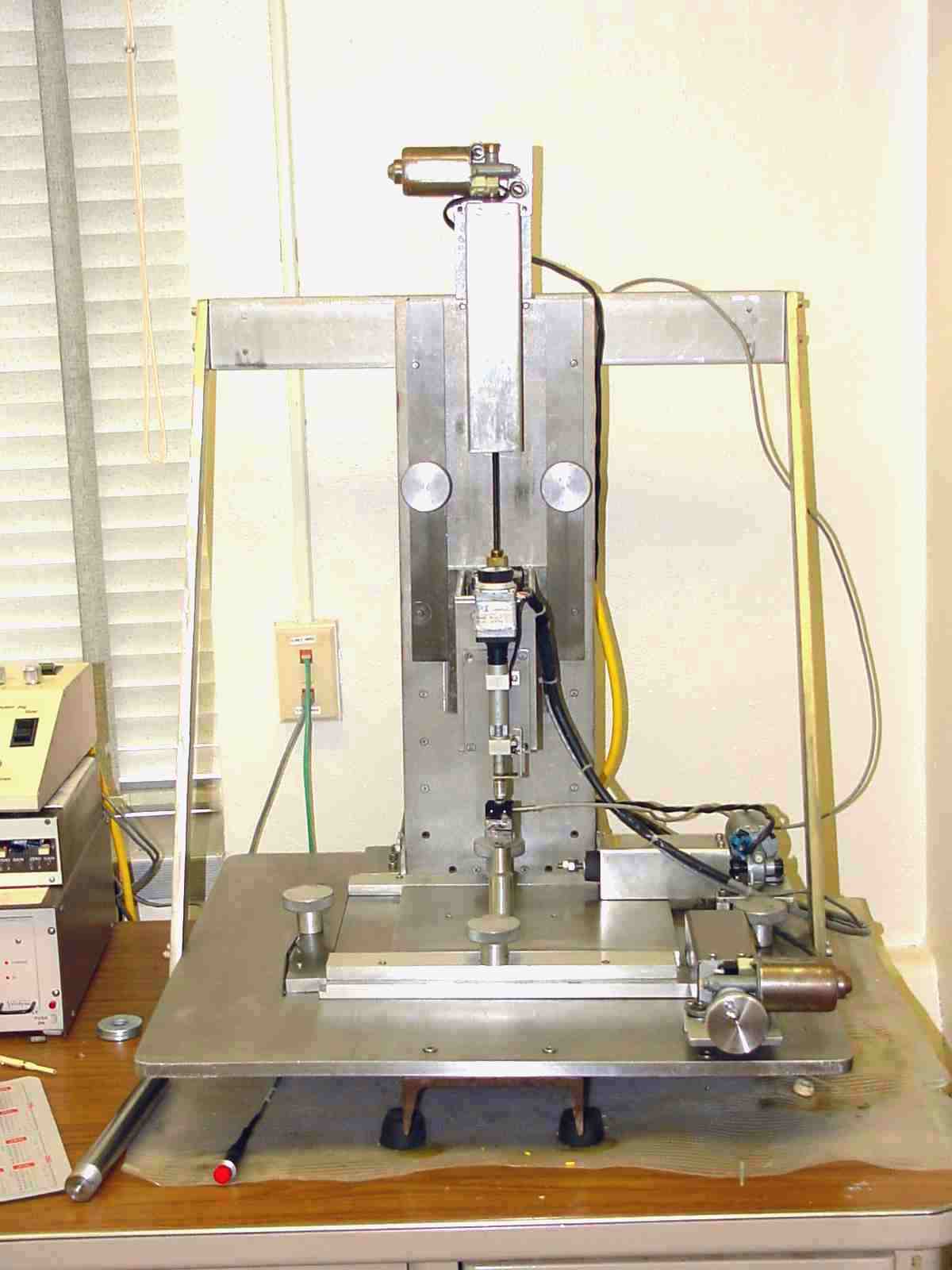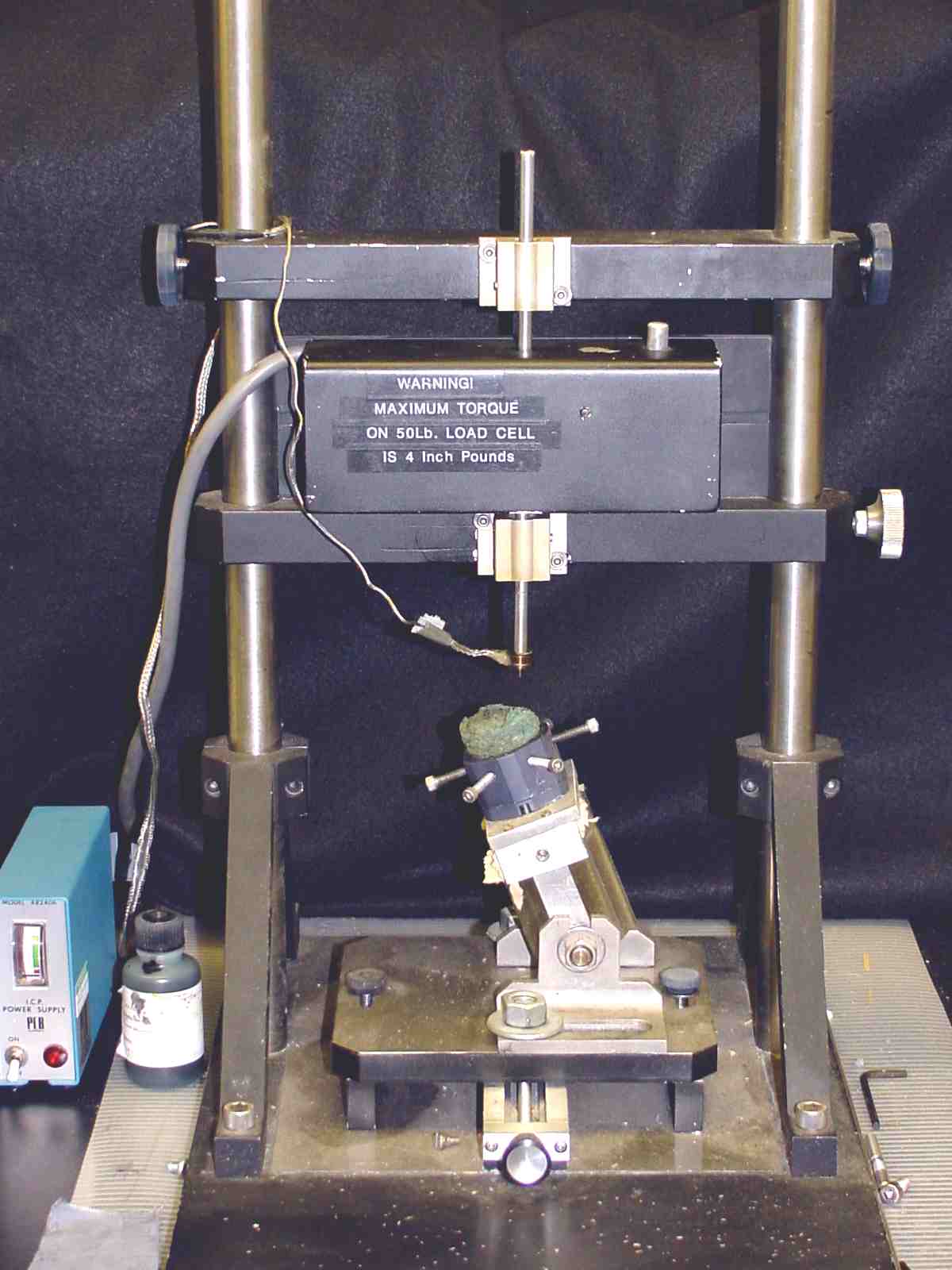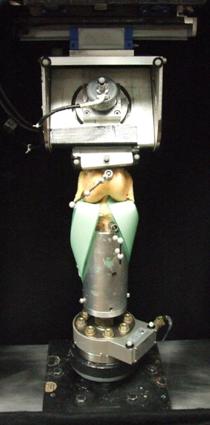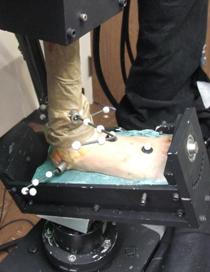This laboratory is primarily used to examine the effects of loads on animal tissues, cartilage, bones, and muscles. These are the pieces of equipment that are most commonly used:
1. Mini-Indenter

- Used to determine the stiffness and other material properties of cartilage.
- Small indenter is placed in contact with cartilage surface, then compressed with a 0.1 mm square wave of 150 seconds duration.
- Calculates a force-time curve, which can be used to measure stiffness and shear modulus of the cartilage.
2. Miniature Drop-Testing Machine

- Gravity-controlled impact device with a maximum load of 50 pounds and a maximum drop of 12 inches.
- Used primarily for testing cartilage impact response.
- Has the ability to test objects that are uneven in shape for their stiffness.
- Helps researchers understand the structural properties of cartilage.
3. Knee Joint Test Fixtures

- MTS servo-hydraulic testing machine can be fitted with multiple fixtures to produce realistic loads and movement of the knee to study injuries including tearing of the anterial cruciate ligament.
- Fixtures can be used to study tibiofemoral compression, internal tibial torsion, hyperextension, and valgus bending.
- The loads and reactions can be measure by the MTS testing machine, and markers may be applied to use Vicon Motion analysis to measure kinematics of the simulated motion.
4. Simulated Ankle Injury due to Torsion

- Utilizes the MTS Servo-Hydraulic testing machine and the Vicon Motion capture system.
- Used to produce external rotation in an ankle to put realistic strains on the ligaments and tendons at the joint.
- Tool for studying the failure characteristics, including angle of rotation and torque of the ankle.
5. Pediatric Skull Fracture Testing Fixtures

- Two testing fixtures were used to model pediatric skull fracture with porcine skulls.
- Both fixtures was used to model fracture of blunt force impact while the skull was fixed, by dropping the trolley onto the skull.
- The fixtures also were used to drop the skulls by fixing them to the drop trolley to model fracture patterns of impact after free fall.
- The main difference between the two fixtures was the height of the fall, one representing high-energy impact and the shorter representing a lower-energy impact.
- Helps researchers compare skull fracture patterns to the mode of fracture.
- A custom-designed four-point bending fixture was created to study the mechanical properties of the bone.